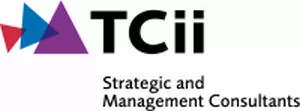An acquisition integration checklist can vary widely, depending on whether your acquisition will remain as a "standalone" or be "rolled in", or some combination of both. It will also vary depending on whether your company and the acquired company are manufacturers, distributors, service providers or a combination of two or more. Being a public or private company will also affect your checklist.
- You should begin creating your acquisition integration checklist during due diligence. Your due diligence team should begin listing issues as they surface.
- At the appropriate time, create a cross-functional integration team from your company and a corresponding team from the acquired company. The timing here can vary widely – especially with the seller team – but the sooner the better with the buyer team. We have done acquisitions where all the integration work was done prior to closing and others where integration didn't begin in earnest until after the closing.
- Regardless of when teams are formed, each team will require a leader and each team member will need to list, prioritise, make recommendations and set timelines for each integration issue affecting both buyer and seller in their area of responsibility as well as others.
- Create a secure intranet site "data room" where appropriate plans, documents, etc. can reside and be updated for all to view. Meet regularly via conference calls, "go-to" meetings and in person when required.
- We suggest using some type of project management software or Excel to track issues, their prioritisation, timelines, critical paths, who's responsible, etc.
- A recent client was a manufacturer (printing and graphics), a distributor (product bought or manufactured for resale) and a service provider (graphic design, file product consulting, etc.). We broke the integration team down by:
-
- Finance: accounting, accounts receivable, accounts payable, etc.
- Operations: facilities, purchasing and manufacturing
- Sales and marketing: customers
- Employees: benefits and human capital
- IT (which crosses over most other functions).
While issues will vary depending upon answers to the questions in the very first paragraph, the following common threads transcend those diverse situations.
- Communications (you should control all of them) to:
- Customers
- Employees of both companies
- Shareholders and regulatory bodies, if buyer or seller is a public company.
- Human capital
- Roll-ins:
- Relocation packages, if any
- Severance packages, if required.
- Standalones:
- Alignment, or not, of benefits and salaries
- Depending on the purchase agreement and seller's plans,
there may be the need to relocate management from your company to
seller's location, temporarily or permanently.
- Training requirements regarding processes, products and services, both at your location(s) and at the seller's location(s).
- Operations
- Integration of telecoms
- Equipment movement, if any
- Consolidation, or not, of purchasing, accounts receivable,
accounts payable, systems, customer service, sales and marketing,
etc. (back office functions and customer facing functions).
- Sales and marketing
- Customer integration and communications
- Pricing
- Website integration, or not
- Co-branding of buyer and seller.
- Finance
- Financial reporting integration with focus on controls if operated as a standalone
- Consolidation of banking functions
- Consolidation of accounts receivable, accounts payable, cost
and other finance functions, or not.
- IT
- System integration, or not, to include the following
platforms:
- Web platform and sites
- Order entry through invoicing
- Secondary platforms such as data collection PC network,
back-ups, cost, radio frequency systems and all other possible
non-ERP platforms.
Your acquisition integration checklist may seem daunting at first. However, much like eating an elephant, one bite at a time usually works.
Setting priorities and timelines, and assigning accountability, is also critical to success.
The content of this article is intended to provide a general guide to the subject matter. Specialist advice should be sought about your specific circumstances.
